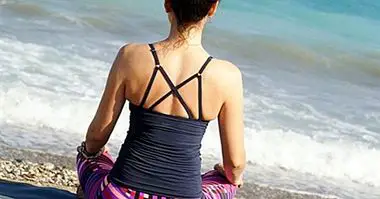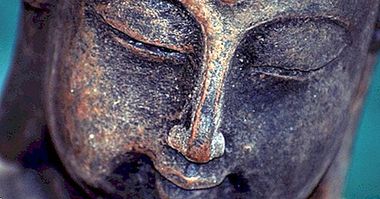Controlled Breathing: what it is and how to use it
Breathing is essential for any living organism. Thanks to it, we obtain oxygen, which is a fundamental element to be able to manufacture the energy that we need to face day to day.
Without adequate breathing we are hindering the proper functioning of our body, that is why it is so important to train Controlled Breathing .
- Related article: "The 4 types of breathing (and how to learn them in meditation)"
The importance of using the lungs well
Surely many of you will think: why do I need to learn to breathe in a "different" way? As well, we may not breathe in the most efficient way for the organism , and that can trigger in some symptoms such as hyperventilation, fatigue, feeling that "we do not get air" or shallow breathing, anxiety, and so on.
An interesting trick to see if we breathe slowly and regularly is to see how a baby breathes, or at least imagine it. When you breathe, does your gut or chest swell? How many seconds elapses between inspiration and expiration? Do you do it slowly and relaxed or quickly and run over? Is it regular or irregular breathing?
It's funny to realize how, as a result of our pace of life or the demands of the environment, we "unlearn" to breathe . One of the objectives of this article is to analyze the way in which we breathe, to know what Controlled Breathing is and to acquire some guidelines to start training it, it will only take away 10 minutes of your day.
What is Controlled Breathing?
Controlled breathing is a technique widely used in psychotherapy which helps reduce physiological activation and, therefore, to cope with anxiety (it is important to note that it does not eliminate anxiety, but helps to cope with it and can contribute to reduce it as a consequence). It is a simple application exercise that anyone can train and incorporate into their routine.
It consists of learning to breathe in a slow way: 8 or 12 breaths per minute (we usually breathe between 10 and 12 times per minute at rest), not too deep and using the diaphragm instead of breathing only with the chest .
- Maybe you're interested: "6 easy relaxation techniques to combat stress"
Why learn to oxygenate like this?
Controlled breathing is characterized by being slow and regular, by the use of the diaphragm and by not being too deep. We will try to explain the scientific basis of why it is better to breathe in this way.
It is important to breathe slowly and regularly because that habit is related to the decline in vital signs (heart rate, muscle and blood tension). Remember the example of the baby: when we are sleeping or about to sleep, we breathe more slowly and regularly than usual in our routine. If we feel more nervous or restless than normal, it is advisable to breathe more slowly.
It is convenient to use the diaphragm, a muscle unknown to many, since in this way we oxygenate our organism better . When we are anxious we breathe very superficially, and we fill our lungs a little, which means that we are not contributing all the oxygen our blood needs.
On the contrary, if we breathe to the bottom of our lungs, more oxygen reaches the blood. By doing this the diaphragm contracts, presses the abdomen and it rises . Controlled breathing is related to (and can stimulate) a parasympathetic response.
It is advisable not to breathe too deeply, otherwise there will be an excessive decrease in CO2 in the lungs and we may hyperventilate (and if interpreted negatively, we may experience a panic attack).
- Related article: "The 6 psychological benefits of yoga"
How can I start practicing this habit?
To begin with, the main thing is that the person finds a place where he feels comfortable and safe (lying on his back, reclined or sitting) and reserve 10 minutes. You have to gently close your eyes and place a hand on your abdomen , placing the little finger just above the navel.
With each inspiration the abdomen should rise, so the hand placed on top of the abdomen should ascend. It's about bringing the air to the end of the lungs , not to take a large amount of air (remember that if you can not produce hyperventilation).
Inspire through the nose for 3 seconds using the diaphragm, and exhale (draw air) through the nose or through the mouth for 3 more seconds, and take a short break to get back on . Some people find it useful to play relaxing background music, others use to repeat mentally and slowly the word "relax", "calm" ... To the most imaginative people it helps to imagine that tension escapes with the air exhaled There are people who are more useful to make the break after inspiring, ie: inspire - pause - exhale. But, in general, it will be as follows: inspire (3 seconds) - exhale (3 seconds) - small pause and back to start.
We should try to breathe 8 to 12 times per minute. For those people who find it difficult to keep track of the seconds while practicing controlled breathing, they can record themselves before performing the exercise indicating when to breathe and when to breathe.
Because controlled breathing is learning like any other, it needs practice. It is advisable to perform this exercise 2-3 times a day for 10 minutes to acquire ease (preferably, in easy and quiet situations), and thus be able to generalize it to other situations in which it is more difficult for us to relax or tend to get more nervous (p. eg, at work, in a traffic jam, after an argument ...).



















